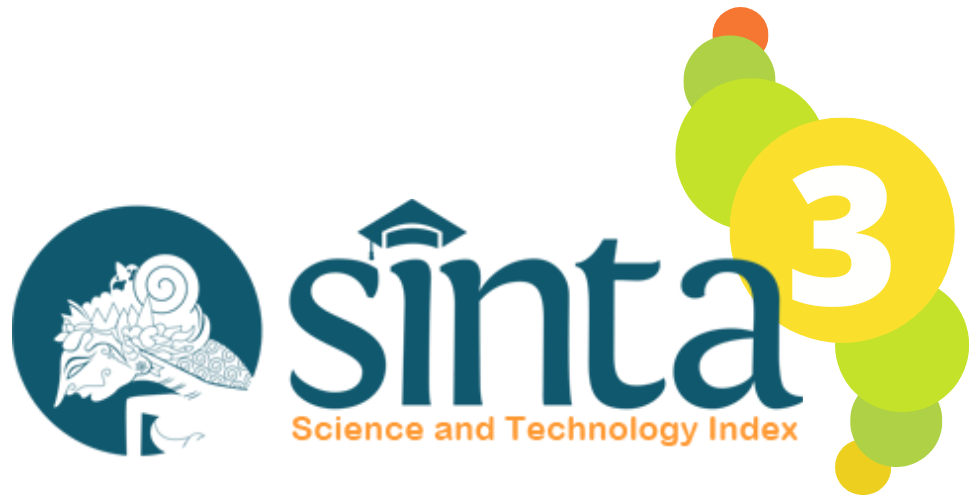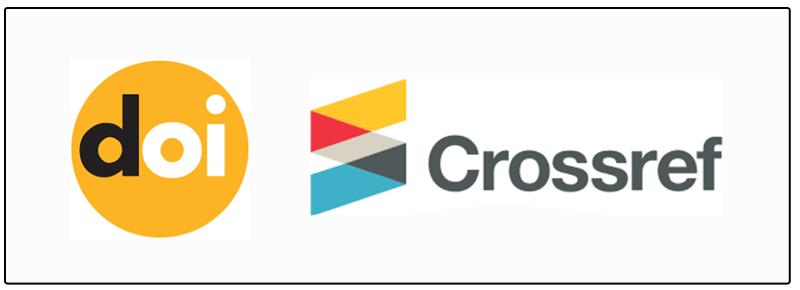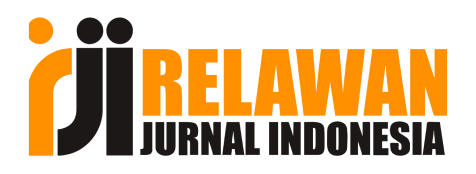Supply Chain Risk Management Assessment and Strategy: Case Study in a Hospital Pharmacy
DOI:
https://doi.org/10.52330/jtm.v22i1.230Keywords:
House of Risk, Hospital, Pharmacy Installation, Supply Chain Management, Supply Chain Risk ManagementAbstract
Health service providers such as hospitals have a very diverse supply chain in quantity and type, one of which is medicine. Hospital Pharmacy Installation (IFRS) is one of the health support activity units responsible for planning, procurement, management, storage, distribution, use of drugs, equipment, and pharmaceutical services for medical devices related to the distribution of drugs used in hospitals. Pharmacy has several risks that need to be addressed to increase customer satisfaction. This study aims to determine the extent of the implementation of Supply Chain Risk Management, identify risks in supply chain activities, and obtain risk management strategies. In this study, the method used is the assessment of Supply Chain Risk Management and continued the evaluation of the drug chain in pharmaceutical installations with the House of Risk. It is divided into two stages, namely House of Risk Stage 1, which is used to decide the risk in each supply chain, and House of Risk Stage 2, to offers a decision-making strategy for each chosen decision. There are 20 risk events and 20 risk agents in the House of Risk stage 1, and 11 proposed risk management strategies in the House of Risk stage 2. Out of 20 risks identified in stage 1, 11 risks contributed to 80% highest risk, and the top three are drug shortage, inappropriate planning, and unclear doctor’s writing. In stage 2, the three most prioritized strategies are e-prescription implementation, clear signs for LASA drugs, and conducting supplier performance evaluation.
References
Ahmed, W., & Huma, S. (2021). Impact of lean and agile strategies on supply chain risk management. Total Quality Management & Business Excellence, 32(1–2), 33–56. https://doi.org/10.1080/14783363.2018.1529558
Aini, Q., Utami, D. P., & Qomariah, T. J. (2019). Applying House of Risk Analysis for Supply Chain Risk Mitigation (Case Study). 2019 7th International Conference on Cyber and IT Service Management (CITSM), 7, 1–4. https://doi.org/10.1109/CITSM47753.2019.8965396
Benazzouz, T., Charkaoui, A., & Echchatbi, A. (2019a). Risks related to the medical supply chain in public hospitals in Morocco: Qualitative study. Le Pharmacien Hospitalier et Clinicien, 54(1), 19–29. https://doi.org/https://doi.org/10.1016/j.phclin.2018.10.058
Benazzouz, T., Charkaoui, A., & Echchatbi, A. (2019b). Risks related to the medical supply chain in public hospitals in Morocco: Qualitative study. Le Pharmacien Hospitalier et Clinicien, 54(1), 19–29. https://doi.org/https://doi.org/10.1016/j.phclin.2018.10.058
Bennett, M. A., McDermott, R., & Beauregard, M. (2017). The Basics of FMEA. Productivity Press. https://doi.org/10.1201/b16656
Boonyanusith, W., & Jittamai, P. (2018). Blood Supply Chain Risk Management using House of Risk Model. Walailak Journal of Science and Technology (WJST), 16(8), 573–591. https://doi.org/10.48048/wjst.2019.3472
Cooper, M. C., Lambert, D. M., & Pagh, J. D. (1997). Supply Chain Management: More Than a New Name for Logistics. The International Journal of Logistics Management, 8(1), 1–14. https://doi.org/10.1108/09574099710805556
Council, S. C. (2010). SCOR Model Reference: Supply Chain Operations Reference Model. Supply Chain Council.
El Baz, J., & Ruel, S. (2021). Can supply chain risk management practices mitigate the disruption impacts on supply chains’ resilience and robustness? Evidence from an empirical survey in a COVID-19 outbreak era. International Journal of Production Economics, 233, 107972. https://doi.org/10.1016/j.ijpe.2020.107972
Elleuch, H., Hachicha, W., & Chabchoub, H. (2014a). A combined approach for supply chain risk management: description and application to a real hospital pharmaceutical case study. Journal of Risk Research, 17(5), 641–663. https://doi.org/10.1080/13669877.2013.815653
Elleuch, H., Hachicha, W., & Chabchoub, H. (2014b). A combined approach for supply chain risk management: description and application to a real hospital pharmaceutical case study. Journal of Risk Research, 17(5), 641–663. https://doi.org/10.1080/13669877.2013.815653
Hebbar, P. B., Sudha, A., Dsouza, V., Chilgod, L., & Amin, A. (2020). Healthcare delivery in India amid the Covid-19 pandemic: Challenges and opportunities. Indian Journal of Medical Ethics, 05(03), 215–218. https://doi.org/10.20529/IJME.2020.064
Heinbuch, S. E. (1995). A case of successful technology transfer to health care. Journal of Management in Medicine, 9(2), 48–56. https://doi.org/10.1108/02689239510086524
Heizer, J., Render, B., & Munson, C. (2022). Operations Management: Sustainability and Supply Chain Management. Pearson Education.
Ho, W., Zheng, T., Yildiz, H., & Talluri, S. (2015). Supply chain risk management: a literature review. International Journal of Production Research, 53(16), 5031–5069. https://doi.org/10.1080/00207543.2015.1030467
Hopkin, P. (2018). Fundamentals of risk management: understanding, evaluating and implementing effective risk management. Kogan Page Publishers.
Isern, D., Sánchez, D., & Moreno, A. (2010). Agents applied in health care: A review. International Journal of Medical Informatics, 79(3), 145–166. https://doi.org/10.1016/j.ijmedinf.2010.01.003
Kauppi, K., Longoni, A., Caniato, F., & Kuula, M. (2016). Managing country disruption risks and improving operational performance: risk management along integrated supply chains. International Journal of Production Economics, 182, 484–495. https://doi.org/10.1016/j.ijpe.2016.10.006
Kaye, A. D., Okeagu, C. N., Pham, A. D., Silva, R. A., Hurley, J. J., Arron, B. L., Sarfraz, N., Lee, H. N., Ghali, G. E., Gamble, J. W., Liu, H., Urman, R. D., & Cornett, E. M. (2021). Economic impact of COVID-19 pandemic on healthcare facilities and systems: International perspectives. Best Practice & Research Clinical Anaesthesiology, 35(3), 293–306. https://doi.org/10.1016/j.bpa.2020.11.009
Ma, H.-L., & Wong, W.-H. C. (2018). A fuzzy-based House of Risk assessment method for manufacturers in global supply chains. Industrial Management & Data Systems, 118(7), 1463–1476. https://doi.org/10.1108/IMDS-10-2017-0467
Mohanty, A., & Chakravarty, N. (2013). An epidemiological study of common drugs in the health supply chain. Journal of Humanitarian Logistics and Supply Chain Management, 3(1), 52–64. https://doi.org/10.1108/20426741311328510
Näslund, D. (2002). Logistics needs qualitative research – especially action research. International Journal of Physical Distribution & Logistics Management, 32(5), 321–338. https://doi.org/10.1108/09600030210434143
Nugraheni, S. R., Yuniarti, R., & Sari, R. A. (2013). The Analysis Of Supply Chain Risk On Ready To Drink (RTD) Product Using House Of Risk Method. Journal of Engineering And Management In Industrial System, 5(1), 46–57. https://doi.org/10.21776/ub.jemis.2017.005.01.6
Osorio Gómez, J. C., & España, K. T. (2020). Operational Risk Management in the Pharmaceutical Supply Chain Using Ontologies and Fuzzy QFD. Procedia Manufacturing, 51, 1673–1679. https://doi.org/https://doi.org/10.1016/j.promfg.2020.10.233
Prakash, S., Soni, G., Rathore, A. P. S., & Singh, S. (2017). Risk analysis and mitigation for perishable food supply chain: a case of dairy industry. Benchmarking: An International Journal, 24(1), 2–23. https://doi.org/10.1108/BIJ-07-2015-0070
Pujawan, I. N., & Geraldin, L. H. (2009). House of risk: a model for proactive supply chain risk management. Business Process Management Journal, 15(6), 953–967. https://doi.org/10.1108/14637150911003801
Pujawan, N., & Mahendrawathi, E. (2017). Supply Chain Management (Edisi 3). Penerbit Andi.
Riley, J. M., Klein, R., Miller, J., & Sridharan, V. (2016a). How internal integration, information sharing, and training affect supply chain risk management capabilities. International Journal of Physical Distribution & Logistics Management, 46(10), 953–980. https://doi.org/10.1108/IJPDLM-10-2015-0246
Riley, J. M., Klein, R., Miller, J., & Sridharan, V. (2016b). How internal integration, information sharing, and training affect supply chain risk management capabilities. International Journal of Physical Distribution & Logistics Management, 46(10), 953–980. https://doi.org/10.1108/IJPDLM-10-2015-0246
Senna, P., Reis, A., Santos, I. L., Dias, A. C., & Coelho, O. (2021). A systematic literature review on supply chain risk management: is healthcare management a forsaken research field? Benchmarking: An International Journal, 28(3), 926–956. https://doi.org/10.1108/BIJ-05-2020-0266
Simchi-Levi, David Kaminsky, P., & Simchi-Levi, E. (2022). Designing and managing the supply chain: Concepts, strategies and case studies. McGraw-Hill Irwin.
Svensson, G. (2000). A conceptual framework for the analysis of vulnerability in supply chains. International Journal of Physical Distribution & Logistics Management, 30(9), 731–750. https://doi.org/10.1108/09600030010351444
Tanjung, W. N., Khodijah, R. S., Hidayat, S., Ripmiatin, E., Atikah, S. A., & Asti, S. S. (2019). Supply Chain Risk Management on Wooden Toys Industries by using House of Risk (HOR) and Analytical Network Process (ANP) Method. IOP Conference Series: Materials Science and Engineering, 528(1), 012086. https://doi.org/10.1088/1757-899X/528/1/012086
Urciuoli, L., & Hintsa, J. (2018). Improving supply chain risk management - can additional data help? International Journal of Logistics Systems and Management, 30(2), 195. https://doi.org/10.1504/ijlsm.2018.10013175
Zepeda, E. D., Nyaga, G. N., & Young, G. J. (2016a). Supply chain risk management and hospital inventory: Effects of system affiliation. Journal of Operations Management, 44, 30–47. https://doi.org/https://doi.org/10.1016/j.jom.2016.04.002
Zepeda, E. D., Nyaga, G. N., & Young, G. J. (2016b). Supply chain risk management and hospital inventory: Effects of system affiliation. Journal of Operations Management, 44, 30–47. https://doi.org/https://doi.org/10.1016/j.jom.2016.04.002
Zsidisin, G. A., Ellram, L. M., Carter, J. R., & Cavinato, J. L. (2004). An analysis of supply risk assessment techniques. International Journal of Physical Distribution & Logistics Management, 34(5), 397–413. https://doi.org/10.1108/09600030410545445
Downloads
Published
How to Cite
Issue
Section
License
Copyright (c) 2024 Jurnal Teknologi dan Manajemen

This work is licensed under a Creative Commons Attribution-NonCommercial 4.0 International License.



















